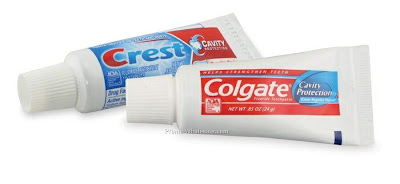In part one, we looked at the ubiquitous tube and arrived at an approximate formula for its volume. We had neglected the effect of the increasing major axis on the volume and had taken it as a constant. Here, we shall try to be more accurate by including this tapering as well in our analysis.
For the elliptical cross section of the tube, let the major axis taper linearly from 2R to 3.14R as you move from the bottom of the tube to the top as shown above. The expression for the semi major axis 'a' at any vertical distance 'x' from the top is given by:
The expression for the semi minor axis 'b' at any vertical distance 'x' from the top is given by:
The volume of the tube can be obtained by the following integration.
Substituting the expressions for 'a' and 'b' and working out the integral we get
which is greater than the result obtained earlier.
Applying the result:
For the toothpaste tube under consideration in part one (R=1.6cm, h=13.8cm), the new formula gives a volume of 66.6 ml. Taking a correction factor of 1.5 to account for the bulging profile as opposed to a triangular one, we get a volume of about 100 ml. The choice of an appropriate correction factor is a matter of debate though. For a net weight of 150 gm, the density of the toothpaste would be 1.5 gm/ml as opposed to the earlier result of 2.5 gm/ml. This new result seems more in agreement with literature which says that typically it's in the range of 1.2-1.6 gm/ml.
Thanks to Raghunandan for pointing out an alternative approach to calculating the density of toothpaste coming from the chemical composition data.
Caveat:
Strictly speaking it is not correct to say that both major axis as well as minor axis taper linearly. Whatever be the values of 'a' and 'b', they have to satisfy the constraint that the perimeter of the ellipse has to equal 2 x pi x R (Since our tube was actually formed by pinching one end of a cylindrical tube). Hence, the moment you say that either 'a' or 'b' tapers linearly, the other has to taper non-linearly. But so far as an approximate calculation is concerned we shall not worry about this constraint.











